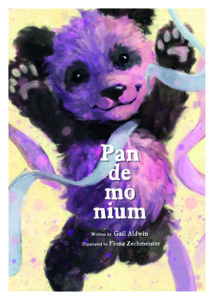An Interview with Gail Aldwin

Gail Aldwin is a novelist, scriptwriter, and poet I’ve been lucky enough to meet virtually. Her new book, This Much Huxley Knows is out now from Black Rose Writing (having launched just yesterday!), and it’s garnering great reviews. Author Sara Gethins wrote that the book is “A joyous novel with the wonderfully exuberant character of Huxley,” while Joanne k Easley said, “This cleverly told story is funny and heart-warming while touching on sensitive, contemporary issues.” The novel joins Gail’s other writing, which includes a coming of age novel The String Games and the children’s picture book Pan de mo nium. Gail is an extremely busy woman—she’s eager to attend and speak at literary festivals and conferences, and she’s an avid volunteer and traveler too. Many thanks to Gail for stopping to take some time and answer a few questions!
Christina: This Much Huxley Knows is your second adult contemporary novel, and it features the voice of Huxley, a precocious seven-year-old. Did you set out to write from a child’s point of view? If so, why did you choose his voice specifically?
Gail: In my debut coming-of-age novel, The String Games , the catalyst for the story involves the disappearance of four-year-old Josh during a family holiday in France. It was because I enjoyed this child character, that I decided to explore writing with a young narrator. When I read early chapters of This Much Huxley Knows to my writing group, they were skeptical that I’d be able to sustain a child’s voice for the length of a novel. This proved to be a motivating factor – tell me I can’t do something and I’ll always want to give it a try.
Christina: Getting a seven-year-old’s voice “right” is not an easy feat. How did you go about constructing Huxley? Is he inspired by someone in your life?
Gail: I mined memories from my own children’s early experiences and drew upon anecdotes from teaching young children to create Huxley. He is a composite of many different children. To get his voice, I played around with different techniques such as using onomatopoeia (where the words used also reflect the sound they make, such as zip, crunch, snap). There’s also repetition and word corruption to illustrate how Huxley is playing around with language. The most important aspect of Huxley’s voice is his unreliable narration. This allows the reader to know more about what’s happening in the This Much Huxley Knows than my young narrator. The action takes place in the world of adults, beyond his understanding. Readers worry about Huxley when he’s unaware of possible danger.
Christina: You also write short fiction and poetry, and you’re the author of Pan de mo nium, a picture book about a unique Panda. What genre calls to you the most and why?
Gail: My passion is for writing novels. It’s the biggest undertaking of all writing projects and perhaps the most rewarding. Pan de mo nium was great fun to create and involved in-depth collaboration with the illustrator, Fiona Zechmeister—a whole different process from writing a novel independently. I continue to dabble in short forms of writing alongside drafting a new work in progress, as I find this exercises different creative muscles and like cross training, helps to build the stamina to complete a long project.
Christina: In addition to writing, you lead workshops for schools, colleges, and community settings, one of which is called “Understanding and Using Psychic Distance.” Would you share a little bit about what that entails?
Gail: Psychic distance is a term coined by John Gardner in his book The Art of Fiction. It relates to the distance the reader feels between themselves and events in the story. He uses five sentences to illustrate this:
- It was winter of the year 1853. A large man stepped out of the doorway.
- Henry J Warburton had never much cared for snowstorms.
- Henry hated snowstorms.
- God how he hated these damn snowstorms.
- Snow. Under your collar, down inside your shoes, freezing and plugging up your miserable soul.
These show how words can be used rather like a zoom lens: from (1) the remote in time and space including formality to (5) stream of consciousness.
When I teach this in class, I get students to work in pairs as writer and reader to experience the sensation of physical movement and its correlation to the stories they develop. If you’re interested in learning more about psychic distance, there’s some useful information on Emma Darwin’s blog:
Christina: You’re very active on social media, and you seem to place emphasis on being a good literary citizen. How can we improve our literary citizenship without becoming burned out?
Gail: I get involved in social media to spread good news. It might be a new submission window has opened, a competition is inviting entries, an author I admire has a new release. It is by celebrating what’s good about the publishing world that prevents burn out.
Christina: What is your writing kryptonite?
Gail: I’ve never been very good at spelling. Many words I simply learned to spell wrongly and don’t even realize I’ve made a mistake. When I was young and worked as a secretary, I used to carry a dictionary around in my handbag. Now, I’m forever looking up spellings online. Thank goodness I have a good proofreader for my novels or who knows what terrible spellings would slip through unnoticed by me.
Gail can be found in multiple places!
Website: https://gailaldwin.com/
Facebook: @gailaldwinwriter
Twitter: @GailAldwin
Thanks to Gail for agreeing to this interview! If you know of an author who’d like to be featured in an interview (or you are an author who would like to be featured), feel free to leave a comment or email me via my contact page.




Thank you for having me, Christina! You gave me some meaty questions to answer and I loved them!
So happy to have you and the book on the site! Looking forward to more of your writing.